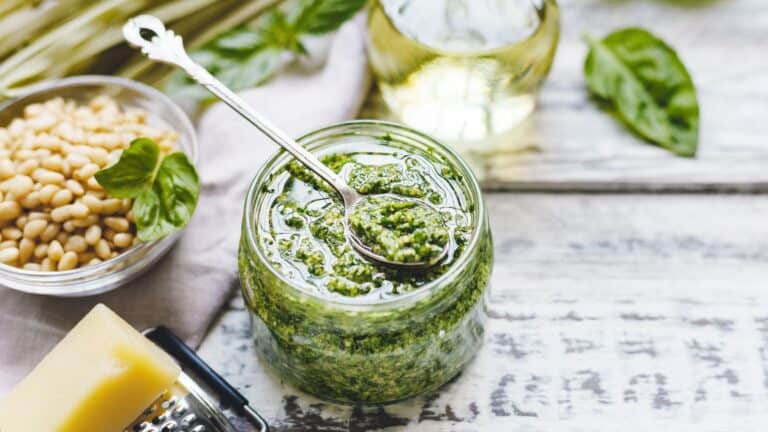What Exactly Is Dry Cleaning – and What Are the Alternatives?
If you are like us, you have wondered exactly what dry cleaning is. We know it’s expensive, and that the smells in the stores and drive-up windows indicate the use of strong chemicals. Is it a safe process for us, our clothes and the environment? This article looks at its history, what the process actually is, and some best practices for you to have the best outcomes. We’ll also look to the pros to tell us whether you can wash any of your clothing labeled “dry clean only”.
Unraveling the Origins

Dry cleaning traces its roots back to the early 19th century, marked by innovative minds seeking alternatives to conventional laundering methods. In 1820, Thomas Jennings, a visionary tailor in New York, pioneered the concept of “dry scouring,” aiming to preserve the integrity of delicate fabrics while effectively removing stains. His groundbreaking efforts resulted in a patent that revolutionized the garment care industry, earning him a place in history as the first African American to secure a U.S. patent.
Meanwhile, across the Atlantic, Jean-Baptist Jolly, a dye-worker in France, stumbled upon a serendipitous discovery that would further propel the evolution of dry cleaning. In 1825, while grappling with a stained linen tablecloth, Jolly observed the transformative effects of kerosene spillage, igniting the spark of innovation. Recognizing the potential of this accidental revelation, he established the inaugural dry cleaning business in France, laying the groundwork for future advancements in the field.
Dry Cleaning Solvents: From Hazardous to Sustainable

The quest for safer and more efficient cleaning solvents heralded a new era of experimentation and innovation within the dry cleaning industry. Initially reliant on petroleum-based chemicals like kerosene and gasoline, early dry cleaners encountered significant challenges posed by flammability and environmental toxicity. However, pioneering efforts by individuals such as William Joseph Stoddard and Michael Faraday paved the way for groundbreaking discoveries that would redefine the industry.
Michael Faraday’s seminal discovery of perchloroethylene (perc), a versatile solvent renowned for its cleaning efficacy, marked a pivotal moment in dry cleaning history. Despite its effectiveness, concerns regarding carcinogenicity and environmental impact prompted the exploration of alternative solvents. This led to the emergence of synthetic petroleum, siloxane, liquid carbon dioxide, and wet cleaning, heralding a paradigm shift towards sustainability and eco-conscious practices – but not without consequences, as you will see below.
How Dry Cleaning Works: Garment Tagging and Identification

When you drop your garments off at the dry cleaner, every garment is given a unique number, which allows the dry cleaner to track its whereabouts throughout the dry cleaning process. It will also help match you to your garments when it’s time to pick them up.
Inspection and Pre-Treatment

The garments will be examined for any particular imperfections or stains that require specialized attention, or the issues will be noted as not a result of carelessness on the part of the dry cleaner. Pre-treatment solutions tailored to specific fabrics and stains might be applied at this time.
Dry Cleaning Machine Operation

Now, the dry cleaning commences. State of the art machinery, using organic solvents or alternative cleaning agents, are used instead of water to clean your clothes. The promise is that size, texture and color vibrancy will not be compromised. Unfortunately many of us know that this is not 100% foolproof.
Quality Assurance

The final step will be to inspect the garment and if anything further needs to be done, it will be performed at this time, such as pressing, ironing, or steaming. The garment will then be folded or hung, ready to be picked up.
Alternative Solvents Have Issues

As society gravitates towards eco-conscious lifestyles, the dry cleaning industry stands at a crossroads. While there are dry cleaning methods that are considered “green”, they have their issues.
One such solvent is synthetic petroleum, a byproduct of gasoline production, touted as a greener alternative to perc. Despite marketing claims, the EPA has classified synthetic petroleum as a neurotoxin, subjecting it to stringent regulations akin to perc.
Another solvent, siloxane, marketed under the name Green Earth, is colorless, odorless liquid silicone. While capable of degrading into harmless components like sand, water, and carbon dioxide, studies have revealed potential carcinogenicity in rats and toxicity to the liver, raising safety considerations.
Liquid carbon dioxide presents a nonflammable, nontoxic solvent option, recyclable for multiple cleaning cycles without generating additional carbon dioxide emissions. However, the substantial initial investment required for specialized dry cleaning machinery poses financial barriers.
Wet cleaning, utilizing water as the primary solvent, represents a straightforward approach to garment cleaning. Despite its effectiveness on most items, challenges arise with stubborn stains, particularly oily residues, necessitating pre-treatment for optimal results.
Clothes We Always Dry Clean

There are some clothes that we always take to the cleaner, such as:
- Men’s and women’s suits.
- Items with a lining
- Wedding dresses, prom dressed, elaborate gowns
- Wool coats
- Anything leather or suede
- Most rayon
- Cashmere (that’s right! It is best to hand-wash those sweaters. More below on hand-washing)
Maximizing Dry Cleaning Efficiency: Pro Tips for Consumers

- Know Your Fabric: Familiarize yourself with garment care labels to ascertain the recommended cleaning method and solvent compatibility. This will be stated on the label.
- Stain Disclosure: Communicate any stains or blemishes to your dry cleaner, enabling targeted pre-treatment for optimal results. Be specific. Red wine will be treated differently than olive oil.
- Avoid DIY Solutions: Refrain from attempting to clean dry-clean-only garments at home, as improper methods can compromise fabric integrity.
- Sensory Evaluation: Upon retrieval, garments should exhibit a neutral odor, devoid of solvent residues indicative of inadequate cleaning practices.
By following these guidelines, consumers can optimize their dry cleaning experience and prolong the longevity of their cherished garments.
Can You Wash Clothing Labeled “Dry Clean Only”?

We know what you really want to know is whether you can wash any of those clothes labeled “dry clean”?
Here is the secret: if it is labeled “dry clean” or “dry clean recommended”, you can try washing or cleaning at home. If it says, “dry clean only”, then please take it to the dry cleaner. In addition, certain fabrics, such as leather or suede should only be taken to the dry cleaner.
Silk can go either way. Some people have very good success handwashing silk, but it is a risky endeavor.
In general, cotton, linen and some polyester are safe to machine wash at home on a gentle cycle. You will also want a gentle laundry detergent, and a mesh laundry bag. Hey
Do A Spot Test

Take the time to do a simple spot test before washing. Dab a small amount of water and a drop of mild detergent onto a hidden area of the fabric, then gently swipe with a clean, white cotton swab. If the swab remains clean without any dye transfer, proceed with machine washing. However, if the fabric dye stains the swab, opt for dry cleaning to preserve the integrity of the item.
Gentle Approach Is Best

Select a gentle or “delicate” cycle to minimize the risk of wrinkling or tangling, especially for garments with dry clean instructions. These cycles utilize a low-speed spin and mild wash action to treat delicate fabrics with care.
Choose cold water when washing delicate clothing to prevent shrinking, fading, or pilling. Cold water is the gentlest temperature, and could help preserve the garment’s longevity.
Choose Detergent Wisely

Not all laundry detergents are suitable for delicate fabrics. Look for mild detergents specifically formulated for delicates, as they contain gentle ingredients that effectively cleanse without causing damage. Choose a detergent tailored to your garment’s fabric type for optimal results.
Prep Your Item

Secure fasteners such as zippers, buttons, or hooks, and turn garments inside out. Place the items in a mesh bag designed for delicates to prevent tangling or snagging during the wash cycle. Finally, place the mesh bag in the washer, close the lid, and start the cycle.
Dryer? Probably Not

Garments labeled “dry clean” require delicate handling, and the dryer is probably best avoided. High heat can lead to wrinkling, shape distortion, and shrinkage. Consider laying knitwear flat to dry to prevent stretching, and hang-drying other delicate fabrics (like a satin camisole) for best results.
What About Handwashing Clothing?

Handwashing is the gentlest home cleaning method. Fill a clean sink, tub or container with cool water (I use a stock pot) and mild detergent, stirring until suds begin to form. Submerge the garment, gently swirling it by hand to encourage loosening of dirt and stain removal. Rinse thoroughly with cool, clean water, repeating until all soap is gone. Water should be clean. Any cloudiness means it is still soapy.
Take a large clean towel and roll the garment up in the towel, gently squeezing to remove excess moisture. Repeat as needed. You might need another clean dry towel. Then your item is ready to lay flat to dry on yet another clean dry towel, or to hang.
Are at-home dry cleaning kits effective?

Home dry cleaning kits are suitable for lightly soiled items, offering a convenient solution to refresh “dry clean” outfits. In fact, that’s the way to think about them: they refresh your clothes more than actually clean them. Dryel has a system that many people like.
The Takeaway

Dry cleaning is optimal for many types of clothes – and especially any that are labeled “dry clean only”. But some clothing labeled “dry clean” or “dry cleaning recommended” can be washed at home, if precautions are taken. Take the time to do that spot test! Use mild detergent and consider using a mesh bag to protect your clothing.
As far as the chemicals used, the alternatives at this point in time have their downsides as well. As always, you have choices to make as a consumer.
‘One And Done’ Eyeshadows! Your New Favorite Way To Look Polished With Ease

Some of us put on a full face of makeup every single day, while others go bare-faced. But there is definitely something to be said for a middle of the road approach. Enter the concept of the “one and done” eyeshadow. No need to master blending, eyeshadow placement, or multiple colors. The beauty of this approach is that there are eyeshadows that can be swept across the lid – and that’s it. You will look polished. Like your best you, with minimal effort. READ ARTICLE







